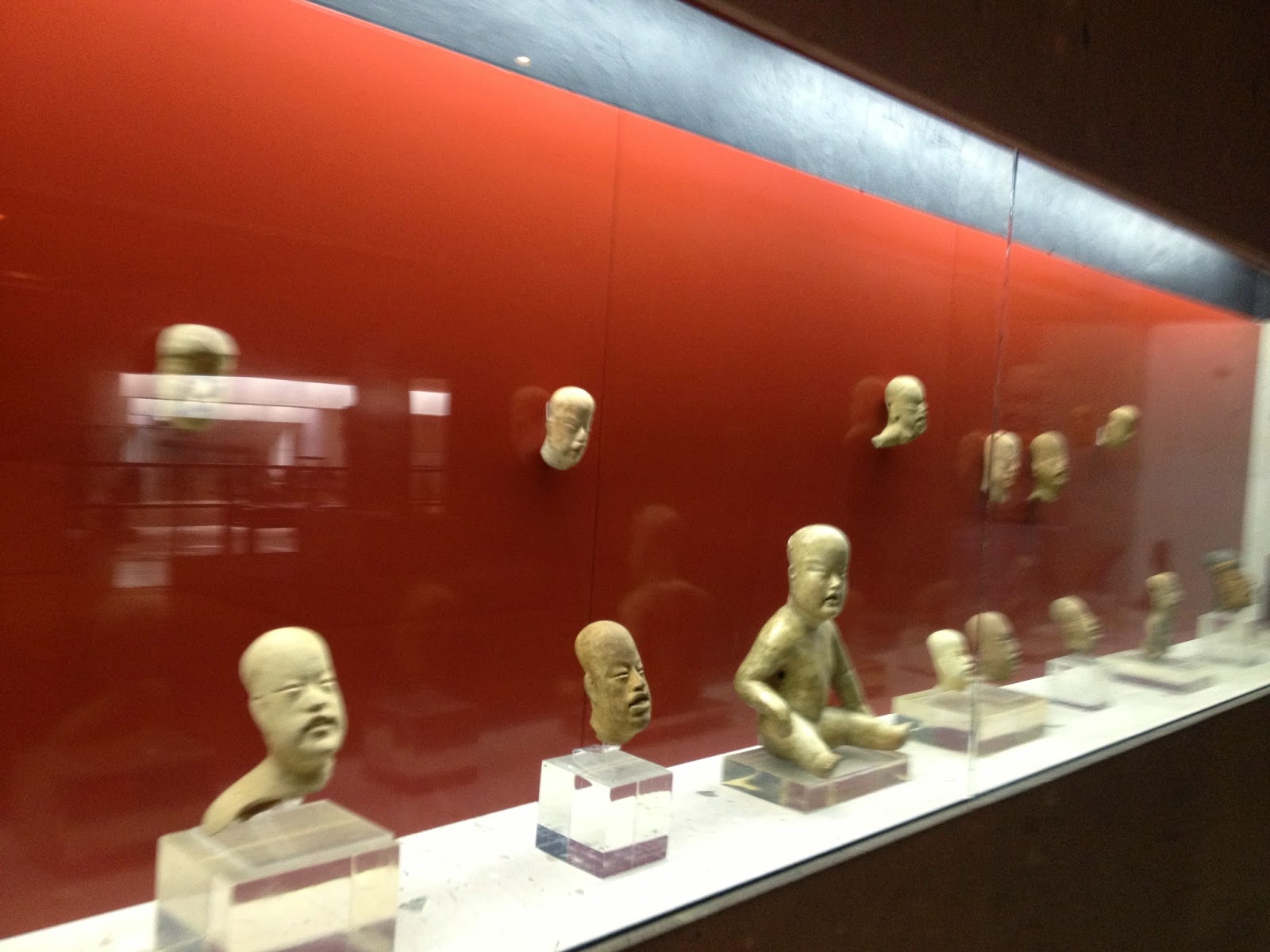“Xalapa, Xalapa, Xalapa.” I don’t know why all the cabbies say it three times. I guess it has a ring to it. It’s one of the easier indigenous words to pronounce. All the ztl combinations get me tongue twisted. I woke up late on Tuesday to an email from a friend of a friend named Jesus asking to meet me in Xalapa. After Zumba and hiking, I didn’t have the energy to rush and since I still have not managed to complete a single phone call, I knew the odds of me actually meeting Jesus were slim. Still I decided to go. I caught a cab to the bus station and when I arrived there was a collective cab in need of one more passenger so I hopped in. The price was only 50 pesos more than the bus and saved me 40 minutes.
I settled into the front seat and endured an hour and a
half of 80s power ballads in Spanish as we passed through the lush green
country side. After the salt tinged sauna of Puerto de Veracruz, Xalapa was a
bit of a relief, breezy and overcast, a good 15 degrees cooler and busy.
Despite a bustling city center, Puerto feels very much like a beach town to me,
whereas Xalapa felt more like a real city with its winding streets and
universities.
On the recommendation of both Lonely Planet and my friend
Sarvelia, I made my way to the Museum of Anthropology. There I tried again to
make a phone call without success, so I sent an expensive text message to Jesus
and then rented a set of headphones and plunged into the museum. I could have
spent days in the Museum of Anthropology which is set on five acres of land and
not only boasts of the country’s largest collection of Olmec artifacts, but is
gorgeously designed and replete with lush botanical gardens. Rarely would I use
the word magical to describe a museum, but this was no ordinary place. I stayed
as long as I could, but through some miracle Jesus was able to text me back and
I finally had a time and meeting place.
I caught a cab to the cathedral in front of some federal
building. There were protestors carrying red flags and white sheets turned into
banners. I still don’t know what they were protesting, but Jesus assured me
that there were protests in that square almost everyday and always for
something different.
We found a comfortable café and sat down to chat. Jesus
and his colleague Rosenda (who joined us after an hour) work for an
organization called Agrupación
de los Derechos Humanos. Founded in the 90s by a few lawyers and a chemical
engineer in response to the terrible condition of indigenous land rights, they
have fought tirelessly to reclaim privatized lands, push legislation to protect
indigenous rights, and most recently to end domestic violence in indigenous
communities. We spoke at length about all the challenges, the victories, and
the work left to be done before Jesus explained why he wanted to meet me.
Recently in Oaxaca and Guerrero the Afro-Mexicans are getting
organized for the purpose of becoming officially recognized by the Mexican
government. Under article two of the constitution, Indigenous people are
referenced by name as being part of the founding population of Mexico. 62
indigenous populations have achieved legal recognition so far, but those of
African heritage have not been officially recognized which means they have no legal
protection against discrimination nor any access to federal aid.
In Oaxaca and Guerrero they have succeeded in gaining
state recognition, but not in Veracruz yet. Apparently they are just at the
beginning of that process. Jesus, understanding the idea of my program wanted
to put me contact the with State Commission on Human Rights so that if during
my travels I met anyone who might be in a position to facilitate this type of
organizing I could connect them. So we went to meet Antonio Falcon and
Magdalena Fernandez and they talked to me more about the work of the National
Consulate for the Prevention of Discrimination and also about the challenges
posed by the various identities.
It was all very fascinating, but with my trip more than
half over I began to feel very concerned that I might not actually meet any
actual Afro-Mexicans, so I asked again where I might encounter them and I was
told to try visiting Coyoliyo.
200 pesos and almost an hour later I found myself in a
tiny town wandering around and feeling very awkward. I did see my first
Afro-Mexican, but she was 8 years old and hardly in a position to answer my
questions. Also I wasn’t sure if she would identify as such, which brought to
light a whole series of ideas about the identities we choose and the ones that
are imposed upon us. It was late by the time I got back to Puerto de Veracruz,
but I didn’t sleep well for having so much to think about.
The longer I am here the more I think that this trip
should be for all youth of color and not just black youth. I would still love
to do diaspora trip, but what keeps coming up for me in Mexico is how the
variety of people of color have had to combine forces to survive create this
unique cultural identity that is not one thing exactly but a hybrid. This is
truly the melting pot that the US claims to be, whereas we are more like a
salad, united under the banner of our nationality, but with very distinct and
separate cultural identities.













No comments:
Post a Comment